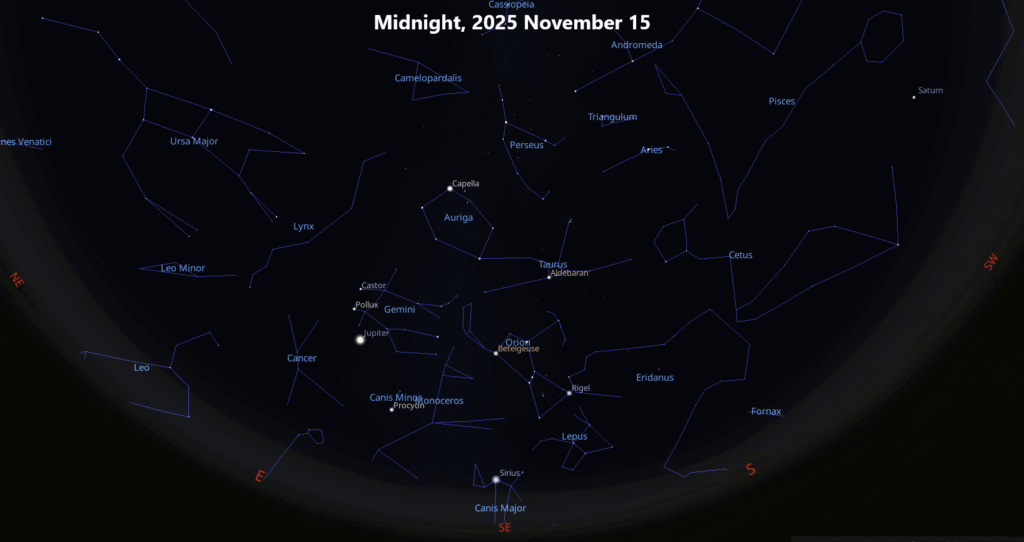Our Dark Sky Advisor, Steve Tonkin, takes a look at the November night sky.
Lengthening autumn nights reveal a rich tapestry of stars. Taurus is now well placed in the eastern sky by mid-evening, presaging the winter constellations. Its bright red giant Aldebaran marks the eye of the Bull and nearby the Pleiades (Seven Sisters) sparkle—a stunning sight with binoculars.
Orion begins to rise later in the evening and in a few weeks’ time its distinctive belt and bright stars Betelgeuse and Rigel will be climbing into view before midnight. If you look below the belt, you’ll see his sword; the middle star looks a little fuzzy. Binoculars reveal that it’s not a star at all but the great Orion Nebula, a region where stars are created.
Auriga with Capella is high in the east, and Perseus is prominent to its right. It too is a rewarding binocular target.

The ringed planet, Saturn, is moving into the western sky and bright Jupiter now rises in the east after darkness falls. Binoculars will reveal the moons of Jupiter that Galileo first saw, but a telescope is necessary to reveal any detail on the planet.
Meteor watchers can look forward to the Leonid meteor shower, which peaks around November 17–18. Look east after midnight for fast-moving meteors radiating from Leo. As with all meteor showers, look high in the sky, not at the radiant.
